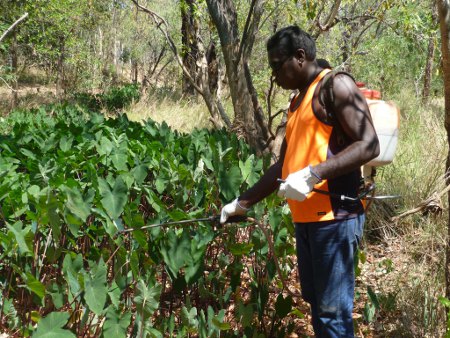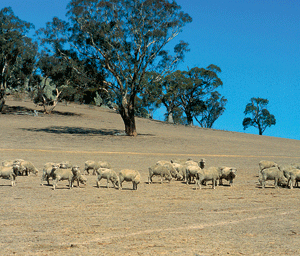
|
Published: 7 November 2011
Indigenous rangers help protect west Kimberley waterways
The Western Australian government has partnered with local Indigenous rangers to target an infestation of a tropical wild plant variety that has invaded the Kimberley’s King Leopold Ranges Conservation Park.

|
|
Indigenous rangers have been helping remove a vigorous weed that threatens to choke the west Kimberley’s unique rivers and gorges. Credit: WA Department of Environment & Conservation
|
The wild taro plant Colocasia esculenta var. aquatilis is considered native to the east Kimberley area but is an invasive weed in the west, where it has the potential to spread rapidly and choke waterways, its favoured habitat.
Taro – known to gardeners as ‘elephant ears’ – was first introduced to the west Kimberley area at a local homestead in the 1980s and has since spread along a tributary of the Barker River.
The Barker River in turn is a tributary of the Lennard River, which flows through two of the conservation park’s spectacular gorges – the Lennard and Windjana gorges – before merging with the Meda River and flowing out to sea.
The WA Department of Environment and Conservation (DEC) has partnered with the Wunggurr Aboriginal ranger group to remove the infestation of introduced taro from around the river.
In August, DEC carried out a trial program to survey the extent of the infestation and test different weed control methods.
Spraying foliage with herbicide was found to be the most effective method. Almost two hectares of invasive taro were sprayed twice in a follow-up expedition in September.
WA Environment Minister Bill Marmion said collaborative weed control work that facilitates the training and employment of Aboriginal rangers was an important component of the state’s $63 million Kimberley Science and Conservation Strategy.
Source: WA Minister for the Environment



